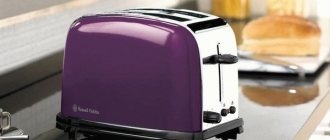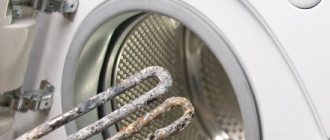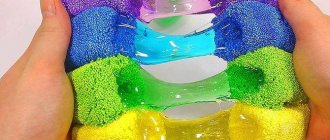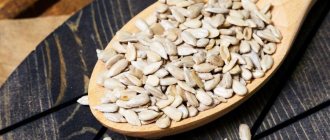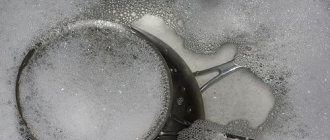The frying pan constantly interacts with fat, food and high temperatures, as a result of which it becomes covered with a dense layer of soot. In addition to its unsightly appearance, this plaque is dangerous to health, as it releases carcinogenic substances when heated. You can clean the frying pan using both folk and professional means; the latter will give a faster effect.
However, you should know which method is suitable in a particular case, because to get rid of old carbon deposits, you will need a more aggressive substance than when washing a burnt dinner. The choice of method is also influenced by the material of the frying pan; each of them has features and care requirements. How to clean a cast iron frying pan from carbon deposits at home, both inside and out.
How to clean a cast iron frying pan from old carbon deposits?
Often, cast iron frying pans, especially old ones, become covered with a large layer of burnt food debris mixed with grease and dirt. To return them to their original appearance, quite aggressive methods will be needed.
There are several rules to follow when cleaning cast iron:
- Be sure to ventilate the room during the carbon removal procedure.
- To remove dirt from the inner surface that comes into contact with food, you should not use aggressive household chemicals, as its particles may remain on the frying pan. An excellent solution is folk remedies.
- Cast iron should not be exposed to sudden temperature changes, as this may cause it to crack.
- The real color of a cast iron frying pan is gray, and this is what you should be guided by.
- After cleaning, be sure to carry out the coating restoration procedure.
Types of cast iron frying pans
Old products were made from pure cast iron, without any surface treatment. Therefore, they can easily tolerate any cleaning methods, as well as various cleaning chemicals.
Modern cast iron frying pans, as a rule, have special coatings that prevent food from burning during cooking. It becomes more difficult to wash such utensils, because most non-stick coatings do not tolerate both chemical and mechanical cleaning.
Before choosing how to care for a cast iron frying pan, it is useful to determine what kind of coating it has:
- without cover;
- enamel;
- Teflon;
- ceramics.
How to care for a cast iron frying pan, or remove carbon deposits that have already formed? Each type requires a different cleansing approach. Let's first take a closer look at the issue of mechanical cleaning. Not every coating can handle it safely.
Soda + vinegar
- This simple recipe is great for scraping burnt-on food out of a frying pan. It is necessary to mix both active ingredients (9% vinegar, baking soda) in equal quantities. The resulting mixture should be applied to the surface, clean the dishes with a stiff brush, wait 30-40 minutes, then wash well, rinse with water and dry.
- This recipe is as easy to prepare as the previous one. The ingredients must be mixed in a 1:1 ratio, distributed evenly over the surface, and left for an hour or two. If you don’t have time, you can put the frying pan on medium heat and wait until the vinegar and soda evaporate. Next, you need to clean the product well again, rinse with clean water.
Restoration after cleaning and creation of a protective layer
After cleaning, if a cast iron frying pan burns and in order to preserve its properties, it is important to carry out restoration measures correctly. So, after removing rust or carbon deposits, you need to rinse the product in warm water and wipe it with a cloth or napkins. If small spots of corrosion remain on the surface, they should be sanded with a metal sponge until a clean surface is achieved.
Then you need to create a protective layer. The frying pan must be treated in the same way as before the first use.
Thanks to this treatment, the surface of the pan will be covered with a layer with non-stick properties - food will not be able to stick to the pan.
With proper care, a cast iron frying pan will last a long time.
Mustard
Mustard is a great way to get rid of carbon deposits and grease at home. First, heat the frying pan over high heat and drain off all the old fat that has spread out. Then you need to pour mustard powder onto the still hot dish and leave for about a quarter of an hour. Then clean the carbon deposits with a soft sponge and washing liquid using light circular movements, rinse off the soap suds and wipe dry with a towel.
Folk remedy
There is another remedy that our grandparents used at home. Thanks to it, you can tidy up any dishes, not just frying pans.
We need the following:
- Volumetric metal container. This can be a basin, a strong bucket or boiling water.
- It will be very good if you can get caustic soda or, as it is also called, sodium hydroxide. Soda ash and regular soda are also suitable. We need a medium pack. But be careful: these are strong alkalis and require care and caution. If you use food grade, then we need double the volume.
- Take several packages of silicate stationery glue. Two or three bubbles are enough.
Now put all the worst metal utensils in a container, add baking soda and glue, and then fill with water.
Then you need to turn on the gas and wait until the water starts to boil. When this happens, measure 30 minutes and after this time, drain the water and turn off the gas.
Important! When you start boiling, it is better to close the door to the kitchen, open the window wide and turn on the hood.
The advantage of this method is that you do not have to scrub everything with a special metal brush or mesh. Now you can remove carbon deposits even with an ordinary sponge. After washing, you need to wipe everything dry, lubricate it well with oil and heat it for some time.
Ammonia + boric acid
Boric acid and ammonia are caustic, aggressive substances; their mixture can only be used for cast iron products. They can harm other materials.
You need to do the following:
- Pour 400 g of water, add 1 tsp. ammonia and borax.
- Pour the resulting liquid into the frying pan so that it covers the soot completely; if the indicated proportions are not enough, increase the amount of substances taken.
- After 1-2 hours, drain the solution.
- Wipe off any remaining dirt with detergent and rinse the product with clean water.
- Calcination with salt/sand
- The most proven and reliable method that helps remove carbon deposits is calcination.
This method was used by people many centuries ago, but to this day it does not lose its relevance. You can clean a cast iron frying pan from carbon deposits like this:
- Before the procedure, prepare the dishes: soak them for 1-2 hours in a solution of baking soda in water, based on the calculation: 1 tbsp. l. active ingredient per 100 g of water.
- After the time has passed, drain the liquid, place the frying pan on the stove, pour sand or fine salt onto the bottom.
- As soon as the selected bulk substance begins to burn, it must be poured out, and after cooling, clean the product with the hard side of a sponge or brush with soap suds.
- The final stage is rinsing in warm clean water and drying.
Ways to solve the problem
If you do not get rid of such contaminants in time, then sooner or later they will provoke a number of other side effects. Black soot will certainly begin to flake off, and during cooking it will get into the contents of the frying pan, which can cause a deterioration in a person’s well-being. Therefore, cleaning dishes is very important.
There are several ways to effectively clean the outside of an old cast iron frying pan. For these purposes the following are used:
- Household chemicals.
- Mechanical devices.
- A universal remedy that was used in the catering system during the Soviet Union.
- Folk remedies.
Household chemicals
Today, specialized stores offer a wide range of household chemicals, with which you can easily and quickly get rid of burnt-on stains on dishes. For these purposes, it is recommended to use products designed for cleaning ovens. They have a strong composition, so you only need to work with them with rubber gloves. The method of using such products is as follows: generously coat a frying pan or pan with the product, place the dishes in a plastic bag, leave it for a day, after the time has passed, wash the products with a metal brush and sponge.
If the dishes are clean and characteristic traces of grease have just begun to appear on them, then it is better not to start the process and immediately after cooking, wash the pan with a regular dishwashing detergent.
Attention! Any chemical intended for cleaning ovens has a persistent unpleasant odor, so when using it, it is better to first open the windows and work in a well-ventilated area.
Mechanical devices
The thickest layer of dirt usually forms on the outside of a cast iron frying pan. Since such metal is highly durable, you can try to remove carbon deposits with a regular metal brush or knife. This process is very labor-intensive, so to make it easier to remove plaque, it is recommended to pre-fry the dishes over an open fire. Under the influence of high temperature, the black coating quickly burns out and turns into powder. But this cleaning method can only be used if the firing device (stove) is located outside. You should not use this method at home, because smoke and a strong odor appear during operation.
Attention! If the house does not have a gas stove, then it is replaced with a blowtorch. It also burns through carbon deposits well, which, under the influence of high temperatures, peels off from the frying pan, as a result of which the cleaning process is noticeably simplified.
Construction tools such as an angle grinder or a drill with a grinding attachment will help you get rid of black deposits. It is also better to work with them outside. You should first put on a protective suit: clothes, glasses and a respirator. After such cleaning, scratches and roughness form on the outside of the pan; they are polished with fine sandpaper.
Read also: Methods for descaling a kettle
Universal solution
During the Soviet Union, almost all catering outlets cleaned dishes by boiling them in a special composition. To prepare the solution, a large container was taken, which was filled with water, where half a kilo of baking soda, two packages of silicate glue, and a grated bar of 72% laundry soap were dissolved. The water was heated on the fire to a boil, and only then the dirty dishes were immersed in it.
For fifteen minutes the contents of the tank boiled. Then it was turned off, covered with a lid and left for 2 hours. During this time, the water in the tank cooled down, and old contaminants were soaked away. After this procedure, the dishes did not have to be cleaned with a wire brush. All that remained to be done was to rinse the kitchen utensils under running water. Similar cleaning methods are still actively used today. But remember that during boiling the solution emits an unpleasant odor. Therefore, if you are cleaning the kitchen, you need to open the windows and turn on the hood at full power. It’s better to clean dishes this way outdoors.
Folk recipes
In order to make cooking on a cast iron frying pan convenient, it is important to wash it after each use so that no traces of grease remain on it. In addition to household chemicals, there are many folk remedies that will help get rid of stains on dishes. Typically used for these purposes: vinegar, sand, laundry soap, salt.
Vinegar
The recipe for using vinegar is extremely simple:
- We take 70% vinegar essence.
- Mix it with water in proportions 1x3.
- Pour the solution inside the frying pan, put it on the fire and boil.
- We wash off the carbon deposits with a metal brush.
Vinegar softens grease stains well, but this cleaning method is accompanied by a strong odor that will not disappear from the surface of a cast-iron frying pan even after thoroughly washing the dishes.
Read also: How to clean a microwave at home quickly and effectively
Laundry soap
Regular laundry soap will also do the job well. In order to wash a frying pan in this way, you need to: pour water into dirty dishes and put it on fire, then grate laundry soap into the water. The solution should simmer over low heat for half an hour. After this procedure, the inner and outer walls of the frying pan can be washed easily.
Sand
Using sand is similar to the method of frying a frying pan. Sand is poured inside the utensil, the frying pan is placed on the fire and heated together with the sand for three hours. Sand causes a rapid increase in temperature, due to which the carbon burns and turns into black powder. A similar cleaning method is also used at home, but you need to remember that it is accompanied by an unpleasant odor. Therefore, we follow the familiar rule: open all the windows and turn on the hood at full power.
Three ingredients
If you need to clean the inner walls of a cast-iron frying pan from carbon deposits, you can prepare a product consisting of three ingredients: vinegar, salt and soda.
- Take two tablespoons of salt.
- Mix them with vinegar so that the resulting solution completely covers the bottom of the cast-iron frying pan.
- Heat the mixture over a fire and bring it to a boil.
- After this, add 70 grams of soda. Mix the contents of the pan thoroughly and reduce the heat to low.
- In this state, the pan is burned for 10 minutes. Then the utensils are washed in the sink under running water with any dish soap.
Other means
If the cast iron frying pan has a grooved surface, it is better to use a product made from washing powder and sunflower oil. To clean, two tablespoons of powder are mixed with the same amount of oil, the gruel is coated on the inside of the frying pan, and then put on fire. The solution is simply brought to a boil, after which the utensils are simply left to soak. Powder and oils soften any black deposit well, after which it easily peels off from dirty surfaces.
Read also: Methods for cleaning the inside surface of a microwave oven at home
You can clean cast iron kitchen utensils with a mixture made from ammonia and borax. It is prepared as follows: add 10 grams of borax and a couple of drops of ammonia to a glass of warm water. The solution is applied to dirty surfaces with a brush, after which the dishes are left for half an hour and then washed with dishwashing detergent.
Digestion
You can save a frying pan from years of soot on the outside by boiling it down. First, you need to find a container large enough to completely fit the product that needs to be cleaned of contamination. Next, pour a sufficient amount of water into it, add 50 g of crumbled laundry soap, 100 ml of PVA (or silicate) glue, 50 g of soda. You need to cook the pan in this liquid for at least 3-4 hours, then remove any remaining carbon deposits with a sponge.
Attention! You need to take a heat-resistant container for boiling, as it will be exposed to high temperatures for a long time.
How to clean a ceramic frying pan
Proper operation and regular preventive cleaning of the surface with running water and a dry cloth are not a panacea that can protect frying pans from the formation of grease and soot. Over time, they begin to take over the surface both inside and outside. The main thing is not to delay solving the problem and start neutralizing it immediately. A thick layer of soot is much more difficult to deal with.
Olive oil as a way to combat fresh stains
No matter how strange it may be, olive oil is the first to combat fat and carbon deposits.
Required:
- olive oil - a couple of drops;
- soft fabric.
The method of cleaning a ceramic frying pan from carbon deposits using oil is quite simple. Apply a few drops of oil at room temperature to a soft cloth or sponge. Fresh, uneaten carbon deposits will easily come off the surface without effort.
Removing stubborn fat and carbon deposits using citric or acetic acid
Soft acids, including vinegar and citric acid, will help you clean a ceramic-coated frying pan.
The method is indicated for removing carbon deposits from the inside. There is no need to worry about the coating: the solution eats away fats without affecting the ceramic and non-stick layer.
Required:
- vinegar (9%) – 100 ml;
- citric acid – 1 tbsp. l.;
- water - up to a third of the pan.
Application:
- Mark the amount of water so that the top level reaches a third of the pan.
- Add citric or acetic acid to the water.
- Pour the solution into the frying pan and bring to a boil. Turn off and wait until it cools completely.
- Drain the water and remove the carbon deposits with a soft sponge with a drop of washing gel added.
Activated carbon for stubborn fat
Regular activated carbon will help clean a ceramic frying pan both inside and out.
Don't worry that the abrasive particles in the composition will damage the surface. The product is aimed at softening and peeling off fat and carbon deposits. The removal itself occurs with a soft sponge without the use of brute force or friction.
Ingredients:
- dishwashing gel;
- activated carbon – 1–2 packs.
Application:
- Grind the activated carbon to a powder.
- Rinse the pan under running water to remove dust and food debris.
- Apply the gel evenly to the wet surface.
- Spread the activated carbon into the powder in an even layer without rubbing.
- After 60 minutes, rinse off the pharmaceutical-based cleaning product under high water pressure. Proceed to use the sponge only after the composition has been completely removed.
The product is quite effective. It will help to cope with old fat and carbon deposits. The ingrained contamination will succumb only after secondary exposure.
Melamine sponge for cleaning the outside of the pan
Melamine sponge is not recommended for use on the inside of the pan.
If there are already microcracks on the surface, particles of melamine chips may remain in them, which are harmful to health. Therefore, it is recommended to use melamine sponges only outside, where there is no direct contact with food.
Usage:
- The use of the sponge begins with wetting it with water. Spinning should occur without twisting.
- The sponge remained damp, but not soggy. In this form, using the rib, begin to clean the dirt.
Household chemicals for cleaning old stains
Often, old stains cannot be removed without drastic measures. Considering that friction and the use of metal objects are strictly prohibited, household chemicals will help in the fight. From a rich list, choose products that contain hydrochloric acid, but in a concentration of no more than 15%.
List of household chemicals that are allowed for external use:
- Amway Dish Drops – for 1 liter you will have to pay at least 630 rubles;
- Unicum Gold – 500 ml for 220 rubles;
- Sano Forte plus – for 750 ml 524 RUR;
- Shumanit – 270 ml for 255 rubles;
- Pemolux – 480 g for 45 rubles.
These can be sprays, gels, foams, or powders. The latter are used at home according to the principle of activated carbon: apply, leave and rinse off repeatedly.
You will need:
- Latex gloves.
- Soft foam sponge.
- Selected cleaning product.
To remove burnt fat using household chemicals, strictly follow the recommendations:
- Wet the surface.
- When using a liquid product, apply a thin layer and with gentle movements, without pressing, bypassing the areas of the handles, clean the carbon deposits. Dilute the powder in water to form a paste. Apply, leave. Rinse off most of it, and use the rest to clean.
- After removing, rinse the pan thoroughly with warm water.
Drill cleaning
This method is the most radical, time-consuming and quite dangerous, so this procedure should be carried out very carefully. Despite the danger of damage to the product, cleaning with a drill is an excellent way to get rid of a thick layer of burning on the outside, which cannot be cleaned by other methods:
- An old cast iron frying pan should be firmly secured on the table, preferably with clamps, before removing all handles and other removable parts.
- You need to put a brush attachment on the drill to grind metal.
- Do not neglect protection: wear goggles for welding work, thick gloves - this way the mucous membranes of the eyes and the skin of the hands will not be damaged.
- After preparations, you can begin the cleaning procedure: drill the frying pan, removing carbon deposits layer by layer.
Attention! It is better to clean the inside of the product in other ways, since a drill can damage the bottom.
If the frying pan is old
Cookware made of cast iron practically does not deteriorate over time. Even an old cast iron frying pan or pan that is covered in rust can be easily returned to its original appearance and continue to cook delicious dishes in it.
How to clean a cast iron frying pan from years of carbon deposits:
- Cleaning old cast iron pans begins with baking. Before doing this, cover the bottom shelf in the oven with food foil to protect the cabinet from contamination.
- Cast iron cookware should be placed upside down on the top shelf and calcined at a temperature of at least 250° for at least 2 to 3 hours.
- Give the dishes some time to cool.
- Before cleaning a cast iron frying pan, prepare a bowl large enough to completely fit the pan. Pour equal amounts of water and table vinegar into it so that the pans are completely immersed in the liquid. Add a spoon or two of dishwashing liquid to the same basin and soak the frying pan in this solution for several hours, maybe even overnight.
- After the dirt has liquefied well, remove all the dirt with a sponge. After this treatment, carbon deposits and rust should easily come off the walls and handle of the frying pan.
- Then wash the dishes that have been cleared of various deposits under running water.
Finally, you need to give the walls of the cookware non-stick properties. How to properly treat a frying pan so that the food on it does not burn to the surface?
Cleaned and washed cast iron cookware should be thoroughly wiped with vegetable oil on the inside and outside, not forgetting the handle. After this, the frying pan must be placed in an oven preheated to 180° on the top shelf upside down and heated in this position for at least an hour. This will cause microscopic pores on the surface of the cast iron to expand, and the oil will slightly saturate the metal. As the cast iron cools, the porosity of the cast iron will decrease, while the oil will remain in the thickness of the walls. After this treatment, food will not stick to the cast iron during cooking.
While you are cleaning the frying pan from old deposits, soot and rust, there may be an unpleasant smell in the kitchen. Therefore, it is better to clean off old dirt with the windows open.
Cleaning cast iron products from rust
Cast iron is durable and resistant to many impacts, but not to rust. It is formed due to the fact that the surface of the alloy is porous. Moisture and grease accumulate in micro-recesses, which leads to oxidation and rust. It spoils the appearance of the dishes, the taste of the food, and even makes the food dangerous.
The following remedies will help you clean cast iron cookware from rust at home:
- Soda. This method also involves digestion. You need to take a large container, pour in a sufficient amount of water, add 200 g of soda, immerse the frying pan, and cook for 2-3 hours. After the product has cooled, it should be rinsed with warm water.
- Vinegar. Mix equal amounts of water and vinegar, place the dishes in the resulting solution so that it completely covers the rust, and leave for 1.5-2 hours. Rub off any remaining dirt with a stiff brush.
- Coca Cola. This drink contains orthophosphoric acid (E338), which perfectly fights rust. The method is simple - pour a sufficient amount of soda, heat it up, leave for 1 hour, rinse.
- Anti-rust powder. Sprinkle the product onto the surface and use a brush to scrub off any red spots well. Then pour a little water, soak the dishes for 30-40 minutes, and then mechanically remove any remaining rust.
Attention! To prevent rust from appearing on the frying pan, it is necessary to properly care for it: wash it immediately after cooling, transfer food, and do not leave it in the dish. It is important to completely remove any remaining moisture after washing with a towel.
How to prepare a new cast iron skillet for use
The processing of new cookware is aimed at eliminating foreign impurities and creating a non-stick coating. The procedure includes the following steps:
- The dishes are washed with hot water using laundry soap.
- The frying pan is fired in the oven, on the stove or on an open fire. The best option is on the stove. To do this, pour coarse rock salt (about 1 kg) into a bowl, put it on the fire and heat it, stirring occasionally and moving the salt to the walls of the pan. After half an hour, when the salt has darkened, the cast iron is cooled and washed.
- Vegetable oil is poured into the container and heated over the fire for 10-20 minutes.
- The oil is removed and the dishes are wiped with napkins. This creates a non-stick layer.
Creating a non-stick coating
Thermal method for removing carbon deposits
This method is ONLY suitable for CAST IRON PRODUCTS. You will need a gas burner, as well as a special metal brush for dishes. It is better to carry out this procedure outside.
- Step 1. Remove the handle from the frying pan (if it is not metal)
- Step 2 . Place the frying pan on the burner and light it. We wait until smoke comes from the frying pan. Usually a quarter of an hour is enough.
- Step 3. Lower the frying pan into a container with cold water. Due to temperature changes, the carbon deposits will peel off.
ATTENTION! Do not overheat the frying pan; the cast iron may burst!
How to clean carbon deposits from an aluminum frying pan
Thin aluminum is quite easy to damage, and it quickly becomes covered with a layer of burning if you overheat the pan on the stove.
We draw your attention to the fact that such pans are not considered very safe - maybe it’s better not to go through the hassle of trying to wash them, but simply replace them with more modern dishes? If you scratch the pan, it will no longer be usable.
If you scratch the pan, it will no longer be usable.
If for some reason you don’t want to do this, we share recipes that will help clean the frying pan from the oldest black deposits:
- Firstly, you can use the already proven method recommended for cleaning cast iron frying pans - heat the aluminum product over a fire. In addition to the fact that in this way you will remove even the most stubborn burnt, you will be able to visually update your frying pan - small scratches will be masked under the influence of heat.
- Take a 10-liter bucket and prepare a solution. To do this, take half a kilo of calcined salt, laundry soap and several bottles of silicate glue. Pour the ingredients with ten liters of water and lower the frying pan into the mixture. Then leave the bucket on the fire. After 30–40 minutes, the carbon will begin to gradually disappear from the surface. However, keep in mind that this method is quite labor-intensive. In addition, if you overdo it with the amount of glue, the frying pan will become covered with a cloudy coating that is very difficult to clean.
- Silicate solution can be purchased at a hardware store, rather than making it yourself. In this case, you will need gloves to prevent injury to your hands. Never allow the mixture to come into contact with your skin - it can cause serious chemical burns. In addition, you will need to ventilate the area well after using the solution.
- If you don't want to bother making the mixture, just buy a special chemical solution. But don't forget to wear rubber gloves when you get to work. And after its completion, be sure to ventilate the room.
Cleaning from carbon deposits and grease using household chemicals
Soaking with cleaning solution
This method is suitable for removing not very persistent stains. Suitable for all types of pans.
We will need:
- Hot water
- Dishwashing liquid
Step 1. Pour a small amount of detergent into the frying pan. Step 2. Add hot water there and leave it overnight. Step 3. In the morning, clean the frying pan with a sponge and rinse under water.
How to care for a cast iron frying pan. Pollution prevention
The pan must be washed properly. After cooking, any leftover food is removed and the dishes are cooled. Next, pour the cast iron utensils with warm water with the addition of soap or a special detergent, leave for half an hour and rinse with running water. Then the dishes are dried and wiped with a towel.
To prevent contamination you will need:
- Every time after cooking, rinse the pan thoroughly.
- Use non-aggressive detergents.
- Wash dishes from all sides - both inside and outside.
- Regularly restore the non-stick coating.
- Avoid soaking dishes for a long time.
- Store dishes in a dry place.
- Do not store ready-made dishes in a frying pan, as the oxidation process breaks the protective layer.
Cleaners
Small deposits can be removed using household chemicals. Use this method with Teflon and ceramic coatings with caution. Here are some tools that will help you.
1. Amway oven cleaner (sold only on the Internet or at dealers, but it removes carbon deposits and soot for a long time, and is also odorless)
2. Shumanite (an effective remedy for carbon deposits, sold in any supermarket, but has an unpleasant odor)
3. Sparkling Cauldron (sold in hardware stores, one of the best cheap products for cleaning metal utensils)
4. “Mr. Muscle Anti-grease” (not only perfectly removes soot and deposits, but also returns the original shine to the dishes)
Cleaning:
- Step 1. Pour a small amount of product into the frying pan.
- Step 2. Add hot water there, foam and leave overnight.
- Step 3 . In the morning, clean the pan with a sponge and rinse under water.
Why is it important to remove carbon deposits from frying pans?
Soot is products that are charred and stuck to the walls of the vessel. It forms in any frying pan. It is important to get rid of carbon deposits in a timely manner.
There are a number of reasons for this:
- Carbon deposits burn every time you use a kitchen utensil. During this, an unpleasant odor occurs. The food also starts to burn more.
- The frying pan looks untidy and sloppy.
- A frying pan with carbon deposits heats up more slowly and weakly, which means it consumes more heat.
- Soot contains harmful components that enter the human body along with food, causing damage to health. When heated, benzopyrene and peroxide are released. These elements are considered carcinogenic.
It's not easy to get rid of carbon deposits. Regular detergents do not always help. You need to know how to clean a frying pan from burnt food.
Plaque removers
Here is another small list of products that will help cope with small deposits on the walls of the frying pan. They are also sold in any store. Use this method with Teflon and ceramic coatings with caution.
- "Pemolux";
- "HelperProfessional";
- "Mr. Cheester";
- "Zepter";
- "DazhBO";
- "Sanita";
- "Antinagar Hedgehog."
Step 1. Pour a small amount of detergent into the frying pan.
Step 2. Add hot water there, foam and leave overnight.
Step 3. In the morning, clean the frying pan with a sponge and rinse under water.
How to prevent carbon deposits
You can protect against the formation of soot on a frying pan if you regularly care for your cookware. After each use, dishes must be washed with suitable products or laundry soap.
If food burns, do not let it dry out. If you can’t wash it right away, you should at least soak the dishes in warm water. This will be much easier to clean.
You cannot put off cleaning the frying pan, even if the deposits on the walls are slight. It is better to use some simple folk method than to then resort to the help of potent chemicals.
Experts advise: to prevent new fat from sticking to the cleaned cast-iron surface for a long time and so that carbon deposits do not form, after washing it must be thoroughly calcined, lubricated from the inside with vegetable oil, rinsed with water and wiped with a paper towel.
You cannot wash a cast iron frying pan in the dishwasher, because... rusty stains will appear on the surface, which subsequently, when heated, will lead to the formation of carbon deposits that are difficult to remove.
Sewer pipe cleaner
A sewer pipe cleaner can remove years of carbon deposits. But here it is important to purchase preparations containing alkali - sodium hydroxide. Such as Tiret, Mole or Sanfor. This method is only suitable for cast iron and steel pans. The main thing is to follow the instructions exactly.
- Step 1. Pour 500 ml of product into 1 liter of water into a non-metallic bucket and mix. A chemical reaction will occur.
- Step 2. Immerse the frying pan in it and wait until the soot gets wet.
- Step 3. Take out the frying pan and remove any remaining carbon deposits with a wire brush.
- Step 4. Wash the pan thoroughly so that the chemical does not get into the food.
Home cleaning methods
Since ancient times, our grandmothers knew how to wash properly and easily remove carbon deposits from cast iron frying pans. Nowadays, housewives have somehow forgotten such methods.
Let's try to remember them, because they really help remove the most difficult contaminants:
- Digestion. This method helps to clean dishes not only from the inside, but also from the outside. To do this, you will need to first prepare a wide bucket or basin for digestion. Of course, you will need to make a cleaning solution. Half a glass of soda, 2 bottles of silicate glue and half a glass of laundry detergent will come in handy. Dissolve all the ingredients in water, wait for it to warm up, and place the utensils in the basin. After boiling, simmer for about 20 minutes. Then cover the basin and turn off the heat. The pan is left to sour for 2 hours. Now take a stiff brush (not metal if there is a non-stick coating) and carefully remove the dirt. Rinse with clean water as usual.
- Roasting salt and soda. This cleaning option can clean the inside of the frying product. All you need to do is put a frying pan on the fire, pour salt into it and add sunflower oil. Fry for 20-30 minutes. Now pour out the salted butter and pour in a soda solution (half a glass of soda per 1 liter of water). Bring to a boil and simmer for 10 minutes. We wash the dishes in running water.
- Coca Cola. Here's another simple way. The only drawback is the cost. Depending on the size of the pan, you will need a different volume of drink. In it you will need to boil the cast iron utensils for 30 minutes after boiling.
- Burning. This kind of cleaning can be done, for example, at the dacha, since you will need to make a fire and completely burn the cast-iron frying pan in it. As soon as the burnt crust begins to separate from the walls, remove the product and begin to peel it off mechanically. A burnt frying pan with a ceramic or Teflon coating cannot be cleaned this way.
- Boiling with soapy water. You can also clean the frying pan from the inside of old carbon deposits this way. Place on a burner with water and add laundry (brown) grated soap. Boil for half an hour and then simply wash.
Cleanliness Prevention
To prevent rust and maintain the functionality of kitchen utensils, take care to create a protective layer. Step-by-step instructions will help you cope with the task:
- Grease the dishes generously with vegetable oil (olive oil is not recommended).
- Spread it in an even layer using a pastry brush or napkin.
- Preheat the oven to +180-250 ℃.
- Place the pan in a well-heated oven for an hour.
- Then turn off the appliance and leave the dishes until they cool completely.
- Rinse the pan thoroughly with hot water and a soft sponge.
Of course, the best way to keep your frying pan clean is to constantly do preventive maintenance and prevent old stains from appearing. And if you are planning to do some general cleaning in the kitchen, we recommend that you learn how to clean a microwave.
Methods for restoring the coating of a frying pan
Whatever method of washing a cast iron frying pan is chosen, it is important to restore the oily coating of the dishes after the procedure. Otherwise, it will be impossible to cook on the cleaned dishes, because all the food will stick to the bottom during the cooking process. Carrying out the recovery procedure is as easy as shelling pears. We proceed according to the following scheme:
- Place a cast-iron frying pan on the fire, add salt to the bottom so that it completely covers the bottom of the pan.
- Heat the salt until it crackles.
- We take a dry rag and a bowl in our hands, and using a spoon, carefully scoop out the salt from the frying pan, after which we wipe the bottom with a rag, making sure that all the grains of salt are gone.
- We heat the pan again and wipe it with a cloth generously soaked in any vegetable oil.
Attention! If the frying pan was cleaned mechanically or by calcination, then it is useful to continue the procedure described above: wipe off the layer of oil with a paper towel, reheat the frying pan and pour vegetable oil into it again. And so three times. This is the only way to restore the oil layer of the frying pan.
Caring for cast iron cookware
In order for cast iron cookware to last as long as possible, delighting you with unusually tasty dishes, it must be properly cared for and stored. Let's consider the rules for using cast iron cookware depending on the presence or absence of coating.
How to care for a cast iron frying pan without a special coating
Cast iron cookware without coating is not afraid of mechanical impacts from hard objects. In a frying pan, you can cut food into pieces with a knife without fear of damaging the bottom and walls.
But you need to properly care for cast iron cookware, which will help preserve it for a long time, and at the same time, the quality of the food cooked in it will become better every time:
- First of all, you should never leave cooked food in it, much less store it. After cooking, food from cast iron cookware should be transferred to a dish, and the frying pan should be immediately cleaned and washed.
- Do not wash cast iron pots in the dishwasher, or use steel wool or abrasives for cleaning. This will cause rust to form on the inside surface, which will negatively affect the taste and smell of the food being cooked.
- A cast iron frying pan or saucepan should be stored in a cabinet only in a dry state.
- After drying, the internal surfaces should be lubricated with a thin layer of vegetable oil. This will protect the cast iron from rust, and subsequently cooked dishes will not burn.
How to care for enamel coated cast iron cookware
The protective enamel layer is quite fragile. It can be easily damaged by sharp cutting objects, as well as when the frying pan falls on the floor.
Therefore, you must handle enameled cast iron cookware very carefully:
- Do not put enamel pans on fire without fat. This will damage the enamel,
- cutlery used in the cooking process must be made of wood or silicone,
- Do not clean enamel-coated surfaces with metal objects. Also avoid using abrasive cleaners,
- Never expose hot cast iron pans to cold water! If the frying pan, cauldron or saucepan is very hot, it is better to wait a few minutes until the cookware has cooled down enough to be handled with your bare hand.
Caring for a new cast iron frying pan involves removing the factory-applied machine oil from the internal and external surfaces with a dry, soft cloth or paper towel.
After this, the frying pan or pan should be washed under running hot water with a soft sponge and dishwashing liquid. At the end, you need to pour a thick layer of table salt on the bottom and bake the dishes in a hot oven.
If cast iron cookware is properly cared for, then over the course of decades all dishes prepared in it will have a more refined taste and high quality than similar dishes prepared using ordinary thin-walled utensils.

